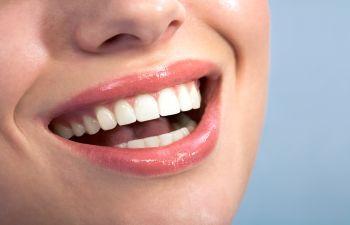1520 Green Oak Place, Suite B Kingwood, Tx 77339
Can Hard Brushing Cause Gum Disease?

Brushing too forcefully, referred to as toothbrush abrasion, can result in several dental issues. Excessive pressure can wear down the enamel, leading to tooth sensitivity and gum recession. Abrasion can also erode tooth surfaces, resulting in decay and cavities. Over time, hard brushing can weaken gums and even cause severe gum disease. In this article, we shall explore all the possible connections between hard brushing and gum disease in detail.
The Connection Between Hard Brushing and Gum Disease
Applying excessive pressure while brushing can significantly contribute to gum disease. Hard Brushing can cause irritation and inflammation of the gums, which can lead to a condition known as gingivitis, a popular name for gum disease. If treatment is not received, gingivitis can develop into more serious gum disease conditions like periodontitis. Aggressive brushing can also wear down gum tissue, which opens the door for bacteria to enter and cause infection. Therefore, it’s important to brush gently to avoid damaging the gums and increasing the risk of gum disease.
Risks of Brushing Too Hard
1. Gum Recession: Forceful brushing can cause the gums to recede, exposing the sensitive root surfaces of the teeth and leading to increased dental sensitivity and cosmetic issues.
2. Tooth Sensitivity: Aggressive brushing wears down the protective enamel layer, making teeth more prone to sensitivity, particularly with hot, cold, or sweet foods and drinks.
3. Gum Irritation and Bleeding: Forceful brushing can irritate and inflame the gums, resulting in bleeding during brushing—an early sign of gingivitis.
4. Increased Risk of Cavities: Over time, abrasive brushing can erode enamel, increasing teeth’s vulnerability to cavities and decay. The compromised enamel exacerbates these conditions, providing a favorable environment for bacteria to thrive.
Proper Brushing Techniques
1. Select the Right Brush: Choose a soft-bristled toothbrush to prevent damage to the enamel and gums. A soft brush can remove plaque and debris without irritation.
2. Apply Gentle Pressure: Use light pressure while brushing. Avoid vigorous scrubbing, which can lead to gum recession and sensitivity. Gentle brushing is key to maintaining gum health.
3. Angle the Brush Correctly: Hold the toothbrush at a 45-degree angle to the gum line. This allows the bristles to clean effectively without harming the gums.
4. Use Circular Motions: Use small, circular motions rather than back-and-forth scrubbing to dislodge plaque and debris gently while minimizing enamel and gum abrasion.
5. Include Tongue and Roof of the Mouth: Remember to gently brush your tongue and roof of the mouth to remove bacteria and freshen your breath.
Final Words!
Maintaining good oral hygiene is crucial for overall health. Proper brushing techniques, including soft-bristled toothbrushes, gentle pressure, and circular motions, are essential to prevent gum disease, cavities, and sensitivity. Remember, gentle care is key to gum health. Electric toothbrushes with oscillating or rotating bristle heads can offer added convenience and effectiveness in cleaning hard-to-reach areas. Regardless of the tool used, regular dental checkups are vital for personalized guidance on brushing techniques and early detection of dental issues. Prioritize dental visits for a healthy smile and increased confidence. Schedule your appointment today!







